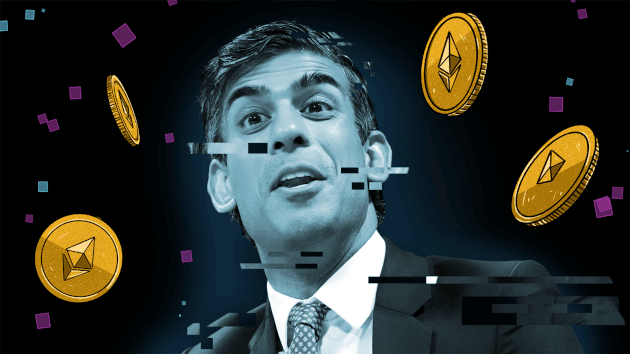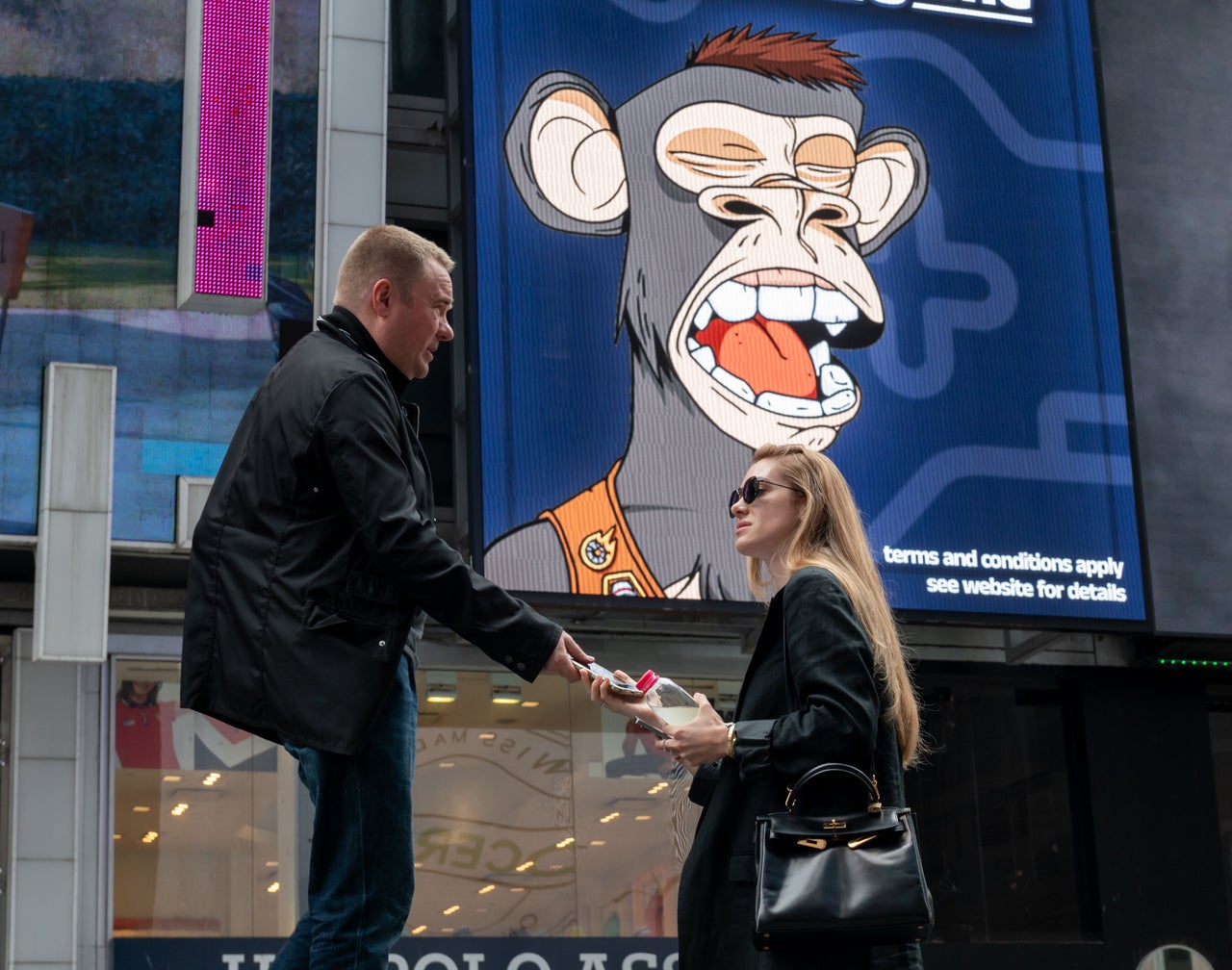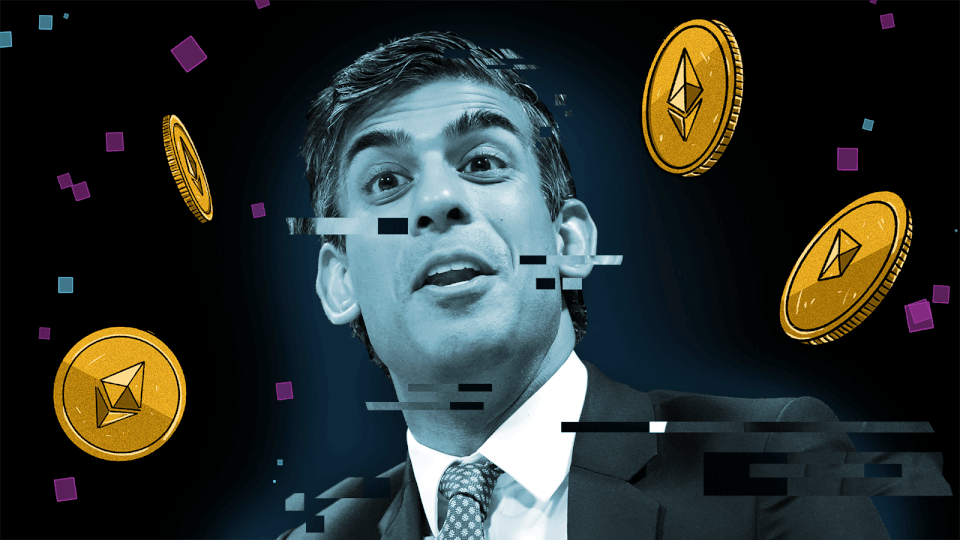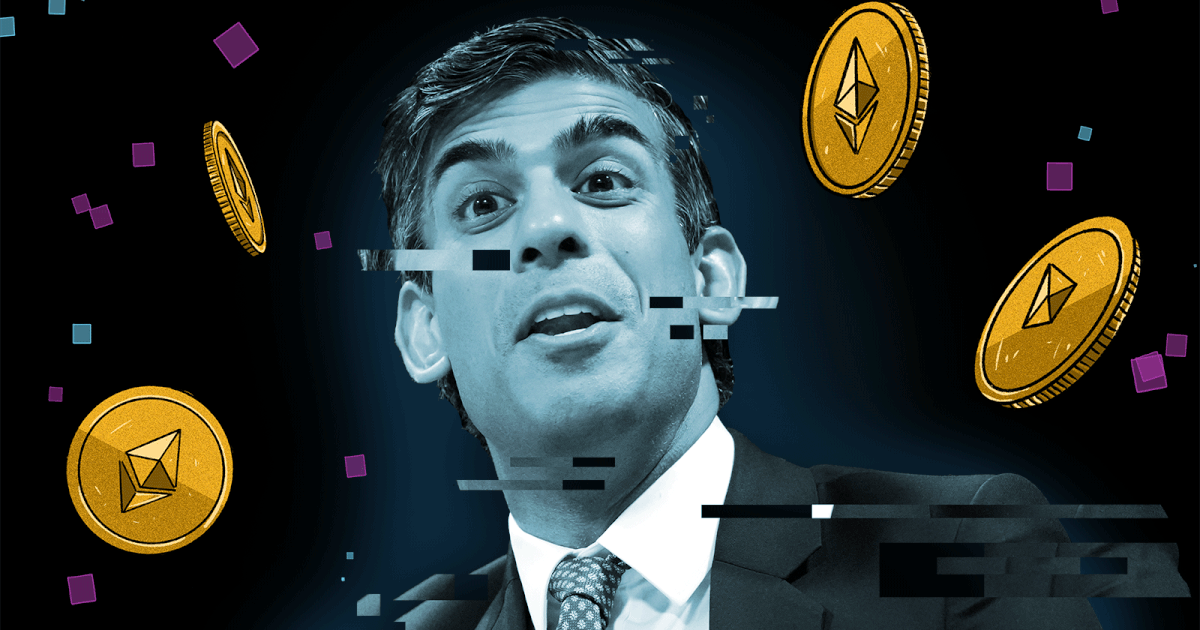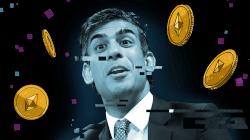The UK’s political landscape in April 2022 was a starkly different place for Rishi Sunak.
He was a chancellor who had enjoyed unusual popularity thanks to his support for workers during the pandemic only to be plunged into an unenviable position.
The country was facing the devastating economic fallout of Covid-19, Vladimir Putin had invaded Ukraine and the biggest squeeze on living standards since records began loomed large.
Advertisement
Tables were turning on the chancellor who was criticised for not doing enough to support the poorest in his Spring statement.
So it was little wonder that when he went all “crypto bro” on us in April, the government was accused of being “out of touch”.
While millions were struggling financially, Sunak announced measures for the notoriously unregulated cryptocurrency sector, which features incredibly volatile currencies.
“It’s my ambition to make the UK a global hub for cryptoasset technology,” he said.
The statement piece of the announcement was that Sunak had instructed the 1,136-year-old Royal Mint to issue a trendy non-fungible token by the summer.
Advertisement
NFTs can be anything digital such as a drawing or music but each one is a unique “one of a kind” asset – rather like a famous painting.

They are stored on a blockchain – the same decentralised ledger of transactions used to buy and sell cryptocurrencies such as bitcoin.
The crypto-phenomenon has proved fashionable with celebrities, most recently supermodel Bella Hadid joined the metaverse with an NFT collection called CY-B3LLA – featuring artworks based on 3D scans of her body.
Artist Damien Hirst is also dabbling in NFTs, announcing he will burn thousands of his paintings as part of his year-long NFT project, titled The Currency.
Advertisement
Buyers who purchased one of the 10,000 NFTs for £1,600 each have been asked to choose whether to keep it or trade it for the physical work. If the former, the painting will now be exhibited before being burned.
However, critics of NFTs say the tokens are fundamentally valueless, unregulated and that fraud and scams are a risk.
Given the huge number of computers needed to continuously run for a blockchain to function, they argue NFTs are also bad for the environment.
Since the Treasury’s announcement there has been a major crash in cryptocurrencies and Sunak walked out of the government along with other key backers.
Sunak is now locked in a battle with foreign secretary Liz Truss to become the next Tory leader and prime minister. His team have been approached for comment.

Noam Galai via Getty Images
Advertisement
The Treasury originally said the NFT would be issued this summer, but next to nothing has been said about the initiative.
Four months since it was announced, the public is none the wiser.
Details of the project remain largely unknown and the government has never specified what image or object the Royal Mint’s NFT would confer ownership of.
But there is a new Treasury team in town, led by former vaccines minister Nadhim Zahawi, so HuffPost UK sent them a slew of questions about the NFT.
We also submitted a Freedom of Information request, asking how much taxpayers’ cash was being spent on the project.
The Treasury FoI team confirmed they held the information but refused to divulge how much they were spending on the NFT.
They said the plans were still “under development” and that ministers and officials “need space” in which plans can be refined.
Meanwhile, the Treasury’s press office remained coy about the plans, insisting they were still going ahead but unable to confirm when.
A Treasury source said it was still their “intention” to issue an NFT this summer but was unable to be more specific.
Labour’s shadow economic secretary to the Treasury Tulip Siddiq accused the government of “wasting time and money on an NFT gimmick”.
Advertisement
She said the Conservatives should “come clean” about how much taxpayers’ money had been “thrown down the drain” and described the lack of transparency as “shocking”.
“With the value of crypto currencies in freefall, the government must ditch its lax attitude to crypto regulation and introduce a comprehensive regulatory regime for the sector,” she said.
“The Conservative’s wild west approach to crypto has put millions of people’s savings at risk and crypto-related crime in the UK – such as fraud and money laundering – is now at record levels.”
She also said that without proper regulation the UK was at risk of falling behind global competitors in FinTech such as the EU and US.
The Royal Mint remained tight-lipped saying they were “continuing” to develop their first NFT range and would share further details in “due course”.
Advertisement
They did not answer a question about when it would launch.

House of Commons via PA Wire/PA Images
It comes after Crypto experienced one of the worst market crashes the new industry had ever witnessed – which saw popular currency bitcoin plummeting.
In a speech last month, Bank of England deputy Governor Sir Jon Cunliffe said the majority of crypto-tokens have “no intrinsic value” and are “inherently volatile, very vulnerable to sentiment and prone to collapse”.
However, the Treasury confirmed it was still “firmly committed” to its plans to create an NFT.
A Treasury spokesperson said: “We are firmly committed to putting the UK at the forefront of cryptoasset technology and innovation by capitalising on the freedoms gained by leaving the European Union.
“Our framework will support the safe adoption of crypto whilst giving regulators the agility to respond to market developments, support innovation and protect consumers.
Advertisement
“Our forthcoming Financial Services and Markets Bill will set up the framework for regulating stablecoins in the UK and we will be consulting on a world-leading regime for the rest of the crypto market later this year.”

